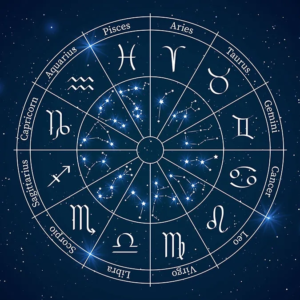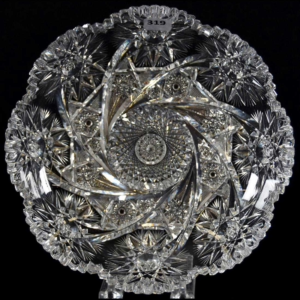Gabbro stone – properties, virtues & benefits
Gabbro stone is an intrusive igneous rock, composed mainly of minerals such as feldspar, pyroxene and olivine. It is used in construction and decoration for its unique aesthetics and strength. Explore the characteristics and applications of Gabbro.
GABBRO CHARACTERISTICS
- Chakra: Root.
- Properties: Anchoring, protection, elimination.
- Astrology: Pluto.
- Zodiac: ScorPio.
- Elements: Earth.
- Colors: Black, dark green, speckled.
- Hardness: 6-7 (Mohs scale).
- Chemical Formula: (Ca,Na)(Si,Al)4O8.
- Associated god: Hades.
GABBRO – HIS STORY
Gabbro is the name of a town in Tuscany, Italy, as well as a type of rock composed of several minerals. Although the stone is not officially recognized by the IMA, it was discovered in Italy’s Northern Apennines and named by German scientist Christian Leopold Von Buck in 1809 after a locality in the commune of Rosignano Marittimo. In the Chenaillet massif, an ophiolite can be found, which is in fact a gabbro-type stone. During the first drilling of the lower crust, core samples were brought up for analysis, enabling us to learn more about the stone. Jean-Luc Berenguer is an expert who is regularly quoted to explain discoveries and samples. So, if you hear about this stone, Berenguer’s name is probably the one to remember.
Gabbro is a stone that differs from basalt in that it was formed by slow cooling of basaltic magma rather than raPid cooling after a volcanic eruption. It took millions of years to form in the oceanic crust through crystallization. This rock is found throughout the planetary crust, and is also thought to be present on the Moon. It is classified in the dolerite family, although it is darker due to the presence of labradorite and bytownite, rather than the clear plagioclases found in dolerite. Crystals in gabbro include plagioclase, pyroxene, amphibole and olivine. Although it contains little silica and no quartz, it may contain small quantities of metals such as gold, silver, platinum, copper sulfide, chromium, nickel or cobalt. The color of this stone varies from green to black or even blue-violet, but is generally dark and opaque. Some varieties are marketed as “black granite” for decorative uses, although this name is geologically incorrect.
GABBRO STONE – ITS ORIGIN AND COMPOSITION
Gabbro is a plutonic stone that comes from the magma chamber and is mainly composed of pyroxene and feldspar. It forms the lower layer of oceanic crust, which explains why it is also present on the Moon’s surface. Its formation results from the partial melting of mantle peridotite, which occurs at the oceanic ridge, where it undergoes slow cooling leading to complete crystallization. Unlike volcanic rocks such as basalt, gabbro is formed plutonically.
Gabbro is generally green to black in color due to its composition of pyroxene, amphibole, plagioclase and olivine. These elements also explain its dark hue. Its structure is made up of small crystals ranging in size from 1 mm to more, and the stone containing these grains is called dolerite. To describe the appearance of this stone more precisely, we can also use the term “microgabbro”.

GABBRO STONE – VERTIES AND PROPERTIES
Gabbro is a mineral renowned for its energetic benefits. It naturally boosts the immune system and can help relieve menopausal hot flushes as well as heal sprains. Psychologically, it is considered a stone of sPiritual understanding, bringing mental clarity and aiding decision-making. Energy theraPists often use it as an accompanying tool to help their patients overcome stress and fatigue.
Although gabbro stone is rare, it’s in high demand because it combines the properties of several minerals and gemstones within it, offering a source of support and strengthening for those who possess it. It can help break routine and encourage change, overcoming mental barriers and ingrained habits that can prevent personal fulfillment. By helPing to find an organization suited to one’s needs, gabbro can be a guide to truth, replacing obsolete behaviors with choices more in tune with the present and the future.
Gabbro stone has regenerative and holistic restorative properties, making it an ideal trigger for stimulating healing and regeneration. It blends well with other minerals and can be worn as a pendant or in a pocket. There are several varieties of this stone, including orbicular, corsite, diorite and napoleonite. By integrating this stone into your daily life, you can rediscover a taste for sPirituality and the desire to change your habits.
It’s common to encounter personal blockages that can hinder evolution and advancement, but this stone can help you become aware of them and take the necessary steps to overcome these obstacles. To maintain its properties, the stone must be cared for. To purify it, simply immerse it in unsalted distilled water, then recharge it under moonlight for several hours, preferably on a quartz cluster. Gabbro stone is particularly suited to the astrological signs of Cancer, Aquarius and Capricorn.
GABBRO ON THE PSYCHOLOGICAL LEVEL
Gabbro stone is often associated with psychological properties of protection, anchoring and purification of negative energies. It can help strengthen emotional and mental stability by promoting connections with the Earth. This stone is also reputed to help channel energy and maintain concentration in stressful or chaotic situations. It can be used to overcome fears and insecurities, as well as to boost self-confidence. However, it’s important to note that these associations and effects may vary according to individual beliefs and are not scientifically proven.
PHYSICAL GABBRO
According to lithotherapy enthusiasts, gabbro can have beneficial properties for physical health. The stone is often considered an anchoring and protective tool that can help strengthen the immune system, balance body energies and promote tissue and bone healing. It can also be used to relieve pain and inflammation.
However, it’s important to note that these properties and effects are not supported by scientific evidence and are based on traditional beliefs and practices. In case of health problems, it is always recommended to consult a health professional for proper diagnosis and treatment.

GABBRO STONE – CLEAN AND RECHARGE
To clean and recharge a gabbro stone, here are some methods commonly used in the field of lithotherapy:
- Water cleaning: Run the stone under running water for a few minutes to rid it of any negative energies it may have absorbed. You can use spring water, demineralized water or rainwater. Don’t forget to dry it gently with a soft cloth.
- Cleaning with salt: immerse the gabbro stone in a container filled with salt water (preferably sea water or unrefined sea salt) for a few hours, then rinse with clear water and dry thoroughly.
- Cleaning with smoke: pass your gabbro stone through the smoke of a white sage, palo santo stick or purifying incense to cleanse it of negative energies.
To reload the gabbro:
- Sunlight or moonlight: expose the stone to sunlight or moonlight for several hours. Moonlight is generally preferred, as it is gentler and less likely to cause damage to the stone.
- Quartz or amethyst clusters: place the gabbro on a quartz or amethyst cluster for several hours, or even overnight, to recharge.
- Earth: Bury the gabbro in the ground for one night to reconnect it to the Earth’s energy and recharge it.
Keep in mind that these methods are based on traditional beliefs and practices and are not scientifically proven. Choose the method that suits you best and adapt it to suit your personal preferences.
WHERE DOES THE NAME GABBRO COME FROM?
The name “gabbro” derives from the Italian “gabbro”, which itself has its origins in the Latin “gabbatum”, meaning “cut into stone”. The term was first used to designate this type of rock by Italian geologist Tozzetti in 1768. The word has been adopted by the international scientific community to designate this intrusive igneous rock, composed mainly of minerals such as feldspar, pyroxene and olivine. Gabbro is often present in the form of large masses, resulting from the slow cooling of magma at depth.
WHICH CHAKRA DOES GABBRO ACT ON?
Gabbro acts primarily on the root chakra, also known as the base chakra or Muladhara in Sanskrit. This chakra is located at the base of the sPine and is associated with qualities such as grounding, security, stability and connection to the Earth. By working on this chakra, gabbro is said to help balance energies, promote self-confidence and eliminate negative energies.
WHICH ASTROLOGICAL SIGN IS ASSOCIATED WITH GABBRO?
Gabbro is often associated with the zodiac sign ScorPio. ScorPio, a water sign, is ruled by the planet Pluto, which symbolizes transformation, renewal and healing. Gabbro’s properties, such as grounding, protection and the elimination of negative energies, can be particularly beneficial for people born under the sign of ScorPio, helPing them through periods of change and strengthening their emotional resilience.
GABBRO STONE SUMMARY
Gabbro is a plutonic igneous rock formed slowly beneath the Earth’s surface by the cooling of magma. It is characterized by a grainy texture and a composition rich in ferromagnesian minerals, such as pyroxene and olivine, as well as plagioclase (a calcium feldspar). This rock is also known for its dark color, usually black or dark green.
Gabbro is found mainly in areas where oceanic crust is created, such as mid-ocean ridges, where it forms a significant part of the seafloor. It can also be found in some subduction zones and in magmatic intrusions associated with mountain building.
Gabbros have many applications, not least in construction, where they are used as paving stone, pavers and aggregates. Because of their strength and durability, gabbros are also used for building foundations and embankments. What’s more, this rock is of geological importance to researchers studying the composition and evolution of the Earth’s crust.
In brief, gabbro is a plutonic igneous rock characterized by its dark color, grainy texture and composition rich in ferromagnesian minerals. It is found mainly in areas of oceanic crust formation and is used in a variety of applications, including construction and geological research.

